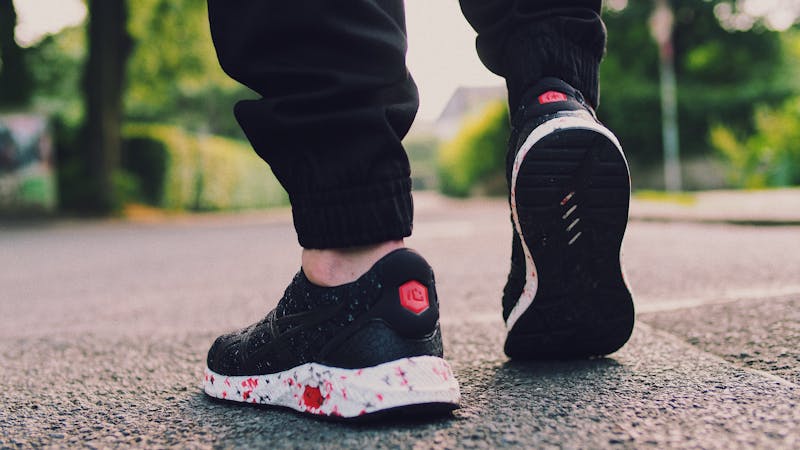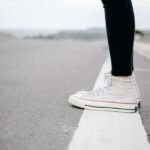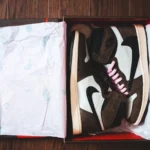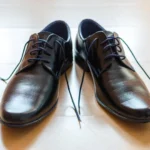Table of Contents
- Introduction
- Understanding Blisters
- Finding the Right Fit
- Breaking In New Shoes
- Socks Matter
- Cushioning and Support
- Adjusting Your Lacing Technique
- Using Moleskin or Blister Plasters
- Keeping Your Feet Dry
- Taping Common Hotspots
- Choosing the Right Shoes for the Right Activity
- Taking Care of Your Feet
- How Do I Stop My Shoes From Giving Me Blisters? – FAQs
- How Do I prevent blisters when wearing heels?
- Can I wear sandals without getting blisters?
- Does the type of material my shoes are made of affect blister formation?
- How do I treat blisters once they form?
- Should I pop a blister or leave it alone?
- How long does it take for a blister to heal?
- Conclusion
Introduction
How do I stop my shoes from giving me blisters?
If you’ve ever found yourself asking this question, you are not alone.
Blisters caused by shoes can be painful and frustrating, but fortunately, there are several strategies you can use to prevent them.
In this comprehensive guide, I will share some tips and tricks to help you keep those blisters at bay and enjoy wearing your favorite shoes without fear of discomfort.
Understanding Blisters
Before we dive into the solutions, let’s first understand what blisters are.
Blisters are pockets of fluid that form on the top layers of the skin.
They are usually caused by friction, heat, or skin irritation.
When it comes to shoes, blisters often occur when there is excessive rubbing between your shoes and your skin, leading to the formation of these painful sores.
Finding the Right Fit
One of the most crucial factors in preventing blisters is ensuring that your shoes fit properly.
Ill-fitting shoes are a common cause of blisters, as they can rub against your skin and create friction. When shopping for shoes, make sure to try them on and walk around in them to assess the fit.
Look for shoes that provide enough room for your toes, do not pinch or rub against any part of your foot, and do not slip at the heel.
Breaking In New Shoes
New shoes can be stiff and unforgiving, leading to blisters when you first wear them.
To prevent this, it’s essential to break in your new shoes gradually.
Start by wearing them for short periods around the house before wearing them for extended periods outdoors.
You can also try wearing thick socks while breaking in new shoes to help cushion your feet and reduce friction.
Socks Matter
The type of socks you wear can also play a significant role in preventing blisters.
Opt for moisture-wicking socks made from materials like merino wool or synthetic blends that help keep your feet dry and reduce friction.
Avoid cotton socks, as they tend to retain moisture, leading to a higher risk of blisters.
Additionally, make sure your socks fit well and do not bunch up or slide down while you walk.
Cushioning and Support
Choosing shoes with adequate cushioning and support can help prevent blisters by reducing the pressure and friction on your feet.
Look for shoes with cushioned insoles, arch support, and padding around the heel and ankle areas.
Inserts or insoles can also be added to provide extra cushioning and support, especially if you have high arches or specific foot conditions that require additional comfort.
Adjusting Your Lacing Technique
Believe it or not, the way you lace your shoes can impact the likelihood of getting blisters.
If you find that your shoes are causing friction in a particular area, try adjusting your lacing technique to relieve pressure on that spot.
For example, if you often get blisters on your heels, you can try skipping the top eyelets when lacing your shoes to reduce rubbing in that area.
Using Moleskin or Blister Plasters
Moleskin and blister plasters are handy items to have on hand to prevent blisters.
These adhesive pads can be applied to areas of your feet that are prone to blistering to create a barrier between your skin and your shoes.
Moleskin can be cut to size and placed on hotspots, while blister plasters are designed to cushion existing blisters and protect them from further irritation.
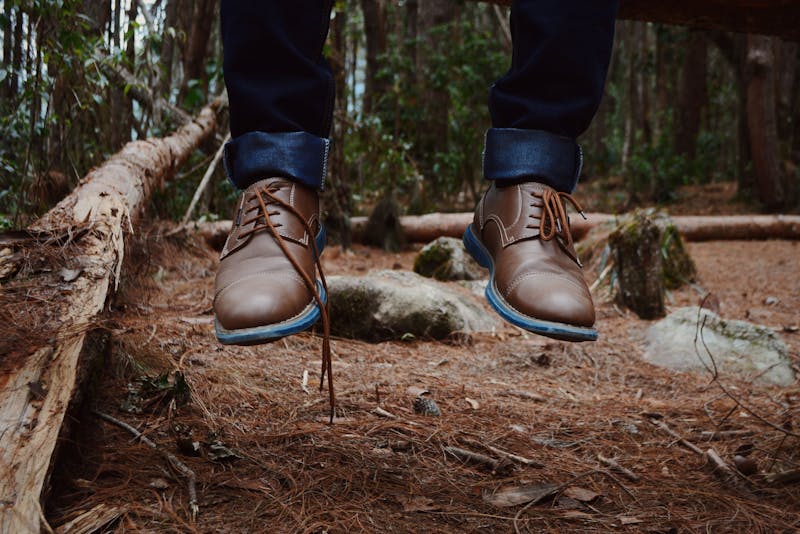
Keeping Your Feet Dry
Moisture is a common culprit when it comes to blister formation.
To keep your feet dry and prevent blisters, make sure to wear moisture-wicking socks and choose breathable shoes that allow air circulation.
You can also use foot powders or antiperspirants to help absorb excess moisture and reduce friction.
If your feet tend to sweat a lot, consider changing your socks throughout the day to keep them dry.
This is a good way to stop your shoes from giving you blisters.
Taping Common Hotspots
If you know which areas of your feet are prone to blisters, preemptively taping those hotspots can help prevent friction and rubbing.
Use athletic or medical tape to cover areas like the back of your heels, the sides of your toes, or any other spots where you typically get blisters.
The tape acts as a protective barrier and reduces the chances of developing painful sores.
Choosing the Right Shoes for the Right Activity
Different activities require different types of shoes, so it’s essential to choose the right footwear for the activity you will be engaging in.
For example, running shoes are designed to provide cushioning and support for high-impact activities like running, while hiking boots offer stability and traction on rugged terrain.
Make sure your shoes are appropriate for the activity to minimize the risk of blisters caused by inadequate footwear.
Taking Care of Your Feet
Proper foot care is essential for preventing blisters and maintaining overall foot health.
Make sure to keep your feet clean and dry, trim your toenails regularly, and moisturize your skin to prevent dryness and cracking.
If you notice any rubbing or discomfort in your shoes, address it promptly to avoid the development of blisters.
Regular foot massages and stretches can also help improve circulation and reduce the risk of foot problems.
How Do I Stop My Shoes From Giving Me Blisters? – FAQs
How Do I prevent blisters when wearing heels?
Wearing heels can put pressure on certain areas of your feet, leading to blisters.
To prevent blisters when wearing heels, make sure your shoes fit properly and provide enough cushioning.
Try using gel inserts or padded insoles to reduce friction and protect your skin.
You can also tape common hotspots before wearing heels to create a protective barrier.
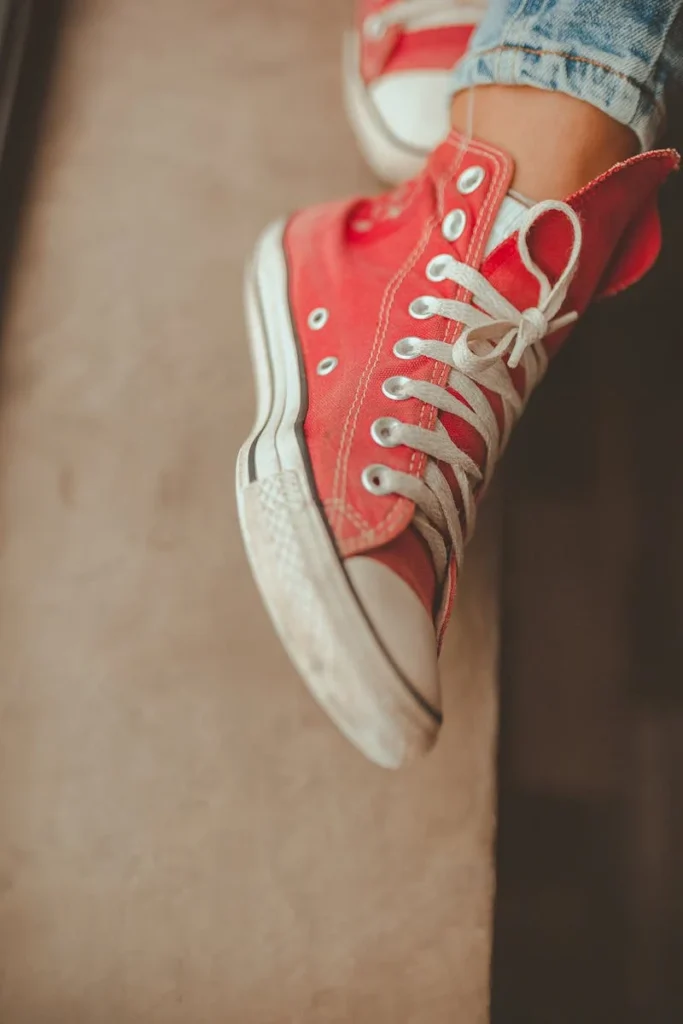
Can I wear sandals without getting blisters?
While sandals can be more breathable than closed-toe shoes, they can still cause blisters if they rub against your skin.
To wear sandals without getting blisters, choose styles with soft, adjustable straps that do not dig into your skin.
Look for sandals with cushioned footbeds and adequate support to reduce friction and pressure on your feet.
Does the type of material my shoes are made of affect blister formation?
Yes, the material of your shoes can impact blister formation.
Certain materials like stiff leather or synthetic fabrics can be more prone to causing friction and rubbing, leading to blisters.
Opt for shoes made from soft, flexible materials that conform to your feet and reduce pressure points.
Breathable materials like mesh or suede can also help keep your feet dry and comfortable.
How do I treat blisters once they form?
If you already have a blister, it’s essential to treat it properly to prevent infection and promote healing.
Clean the blister with mild soap and water, then cover it with a blister plaster or moleskin pad to protect it.
Avoid popping the blister, as this can increase the risk of infection.
If the blister is painful or shows signs of infection, seek medical attention.
Should I pop a blister or leave it alone?
It is generally recommended to leave blisters intact and avoid popping them, as the fluid inside acts as a natural barrier against infection.
Popping a blister can expose the underlying skin to bacteria and lead to complications.
If the blister is large, painful, or at risk of bursting on its own, you can gently drain it using a sterile needle and apply an antiseptic ointment.
How long does it take for a blister to heal?
The healing time for a blister can vary depending on its size and severity.
In general, small blisters may heal within a few days if properly cared for, while larger blisters may take up to two weeks to heal completely.
It’s essential to keep the blister clean and protected to allow the skin underneath to regenerate and minimize scarring.
Conclusion
In conclusion, preventing blisters caused by shoes is possible with the right strategies and precautions.
By finding the right fit, breaking in new shoes gradually, wearing moisture-wicking socks, using cushioning and support, adjusting your lacing technique, and taking care of your feet, you can significantly reduce the risk of developing painful blisters.
Remember to listen to your feet, address any discomfort promptly, and prioritize comfort and fit when choosing footwear.
With these tips in mind, you can say goodbye to shoe-induced blisters and step out in style with confidence.
